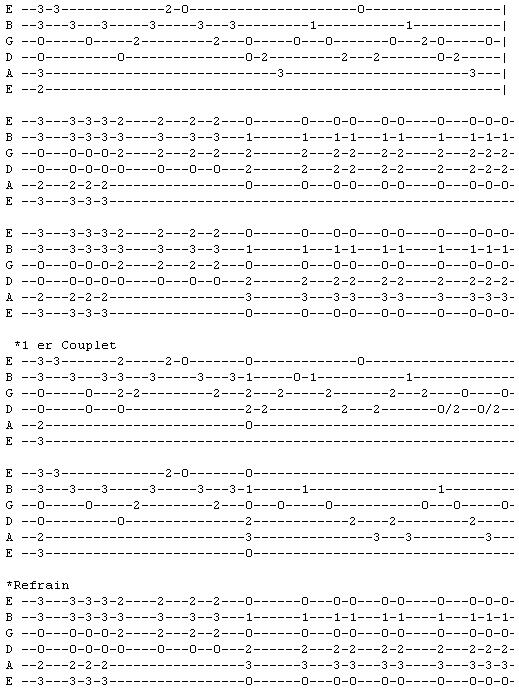

Tablatures faciles how to#
How to play the full Malagueña on the guitar You can hear a tremolo version of the Malagueña melody in Lucarelli’s version here. The tremolo below is the classical guitar technique (a-m-i) rather than flamenco, which is four notes (i-a-m-i). If this is difficult to keep steady at speed, you can play two notes (using the m-i fingers) rather than three notes (using a-m-i). You can hear this effect in Lucarelli’s version the second time he plays the opening melody here.Īnother common variation is to play a tremolo on the high E string in response to the bass melody (Figure 4). Another common choice is to arpeggiate the treble strings with the i-m-a fingers the first time you play them in each bar (Figure 3). There are many ways to improvise around this core melody. Listen to how Giulio Tampalini plays with the timing and volume ( Spotify) to create tension and release. Once the movement is second nature and you can play it through with a rock steady rhythm, you can be more liberal with the timing. Take it slow while learning and work up to full speed, which can be anywhere from 175bpm to 200bpm. Note the melody on the treble strings changes in the second half of bar 4 – release your first finger but keep your second finger in place before making the transition back to E. Hold the C (on the B string) with your first finger and the A (on the third string) with your third finger, leaving the second and fourth fingers to play the bass notes. The bass notes are all played with the thumb while the melody is played with a,m,i.īars 3-4: The implied Am chord presents some tricky left hand fingering. The full melody in Figure 2 below is the opening of Tárrega’s Malagueña Fácil. We’ve seen the simple Malagueña melody in Figure 1 above. How to play the Malagueña melody on the guitar If you’re looking for a place to start with music theory as it specifically applies to the guitar, I recommend Music Theory for Guitarists by Tom Kolb. Tárrega uses the G# to build the E chord but then generally uses the E Phyrgian scale to build the remaining chords (Em – F – G – Am – Bdim – C – Dm). The G and G# are often used interchangeably in flamenco creating another unexpected but pleasing dissonance. While the scale still belongs to the same family as other ‘minor’ key modes, the tonal center (E) now becomes a major chord. This turns the scale into Phrygian Dominant (the fifth mode of the Harmonic Minor scale). However, Malagueña also contains a G#, which creates a minor third between the second and third notes (F to G#).

While the notes and chords are the same for E Phrygian and A minor, the difference is the music resolves to E rather than A. This is the fifth mode of the minor scale (in this case A minor). The F turns the E minor scale into the E Phrygian scale (E – F – G – A – B – C – D – E). This gives it an exotic sound that is associated with Spain and can be heard in many flamenco forms. The Malagueña’s distinctive melody is largely due to two altered notes from the traditional E minor scale (E – F# – G – A – B – C – D – E): the F (a flat II) and G# (#III). The distinctive Malagueña melody is in E Phrygian Dominant mode. The upper E is played in response to each bass note, creating a characteristic droning sound. The melody is largely played on the bass strings.

Malagueña is played in E open position, often referred to as por arriba in flamenco.


 0 kommentar(er)
0 kommentar(er)
